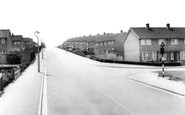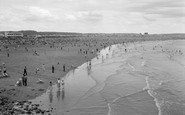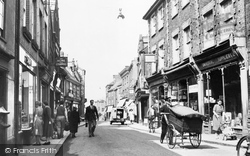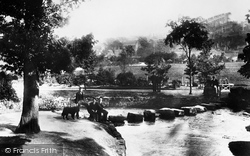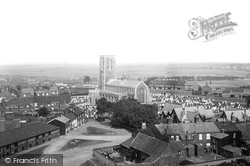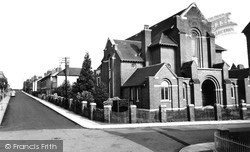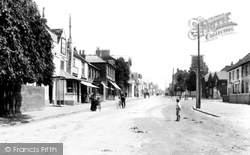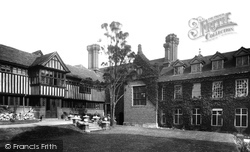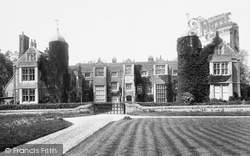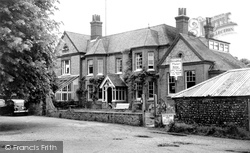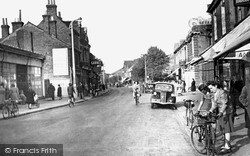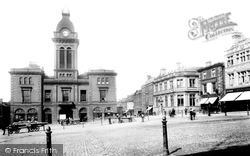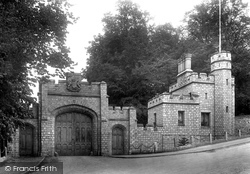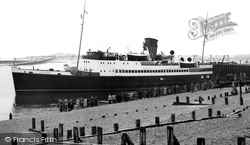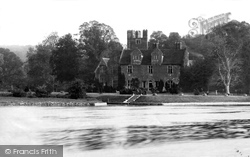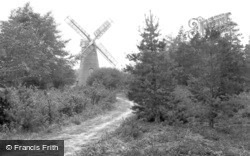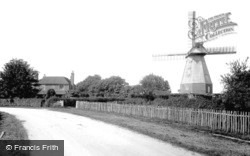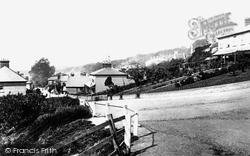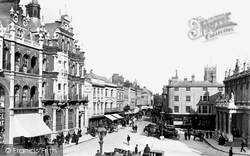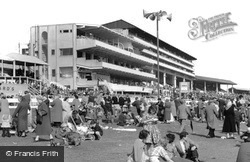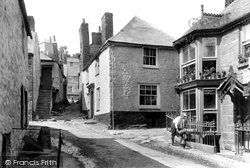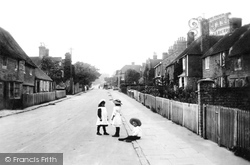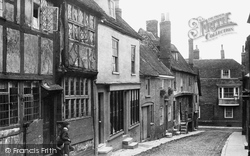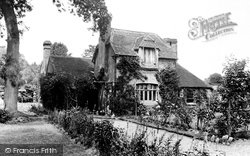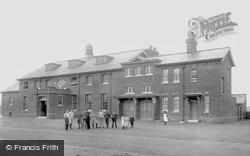Places
Sorry, no places were found that related to your search.
Photos
Sorry, no photos were found that related to your search.
Maps
Sorry, no maps were found that related to your search.
Books
Sorry, no books were found that related to your search.
Memories
655 memories found. Showing results 61 to 70.
When I Lived In Grindleford
My father was policeman in Grindleford from 1952 to 1956, I was almost 5 years old when we moved there and my sister was 10 years old. We lived in the first red brick house on the hill going out of the village to ...Read more
A memory of Grindleford in 1953 by
What Went On
This is from about the 1950s. Along Grange Road was a huge piggery and it was owned by the Liddle family, by, did it pong. Further along you came to the railway crossing with the sign STOP, LOOK, LISTEN in red, this was where the ...Read more
A memory of Newburn in 1952 by
Western House Warborough
I lived in Western House, Warbororough between 1950 and 1955 and went to Dorchester Secondary Modern School. All the Warborough youths used to assemble outside the shop opposite the church and cycle in a convoy to ...Read more
A memory of Warborough by
Wenover C Of E School
I used to go to Wendover Primary School when it was situated beside the clock tower. The head master was then H. J. Figg Edgington. I began in Mrs Tott's class, then Mrs Connolly's, then Mr Spencer's, then Gertrude Agatha ...Read more
A memory of Wendover in 1958 by
Watching Parkside Grow
When my brother and I were old enough to go to Linmear Middle School,(Kings Houghton now), we would walk via a huge field next to Sundon Road, this was sold and Parkside estate began to grow. One of my old school ...Read more
A memory of Houghton Regis in 1972 by
Was I There
I have a vague memory of attending Laleham Abbey convent/school. We seemed to move around quite a bit during these years. I think I might have been seven years old when I arrived at Laleham and have no idea how long I stayed. However, ...Read more
A memory of Laleham in 1945 by
Wartime In Buckland As I Can Recall
Om my first day at the little school on the green I carried around my neck a box illustrated with Mickey Mouse. It contained a mask smelling horribly of rubber and talcum chalk. I was left in tiny ...Read more
A memory of Buckland in 1940 by
Wartime Evacuee 1939 1940
In August 1939 I was evacuated frm Salford to Caton. I had my gas mask, a small parcel of food and a label on my clothing. We arrived at the then beautiful station, adorned with flowers. Then we walked to the Village ...Read more
A memory of Caton in 1930 by
Wartime
We were bombed out in Cardiff during the blitz in Cardiff and my father got us a house in Porthcawl. We lived on Mackworth Road. I have many happy memories of those days. I went to New Road School and then to the senior school, now a ...Read more
A memory of Porthcawl in 1940 by
Warncliffe Viaduct
From the Uxbridge Road you can see the Warcliffe Viaduct. However if you cross the grass you can explore it more fully. I often went in the 50's and 60's to look at it close up. There were allotments then, but I very ...Read more
A memory of Hanwell by
Captions
405 captions found. Showing results 145 to 168.
Looking west along the High Street, we see buildings which are characteristic of North Norfolk: flints set in mortar, with brick facings.
This park was laid out for the benefit of working people to give them a break from the dust and grime of industrial Sheffield.
While many houses burned down in the fire of 1659, the 15th century church of St. Edmund survived because the churchyard served as a fire break.
The brick-built Congregational church on the corner of Union Street and King Street was opened in 1912 and still flourishes, now as the United Reformed Church.
Some time during the second half of the 19th century, Bracknell became a town, helped by the coming of the railway in 1856 and the development of market gardening and brick-making.
The Rush Cutters has a late 16th-century core, evident in the octagonal brick chimneys on the right and the massive stack behind the left hip. The houseboat is a real period piece.
This splendid red-brick Tudor house was once Chillington Manor, home of the Wyatts; one of the family, Sir Thomas the younger, led the rebellion against Queen Mary's marriage to Philip of
The red-brick Tudor manor house of Kentwell Hall stands at the northern end of Long Melford. Today it is best known for the striking Tudor Rose brickwork maze set into the courtyard.
This hotel near the sea front has brick walls with flint gables and garden walling. The tall chimney pots are all the same size. A flint walled outbuilding has a corrugated steel roof.
This bustling fifties shopping scene, with a substantial and surprising number of bicycles in evidence, shows the prominent red-brick Post Office on the left standing out against its rather dingy neighbouring
The Italianate, red brick Market Hall with its imposing clock tower was built in 1857, and still forms the centrepiece of the town's lively regular outdoor market.
Wyatt clad the brick house in the local hard granite- like Denner Hill Stone and gothicised the house with turrets and battlements.
The first 'King Orry' paddle steamer was built in 1842 by shipbuilders Aitken & Napier and sold in 1858. 'King Orry II', built by R Duncan & Company, was launched in 1871.
This splendid photograph shows Bisham Abbey overlooking a scenic stretch of the Thames.
Hurt Wood Mill is a small brick tower mill with four patent sails and a fantail. It is located on a remote hilltop surrounded by woodland. The mill has now been converted into a private house.
This is a Kentish white weatherboarded smock mill with a two-storey octagonal brick base, powered by four eliptic spring sails and winded by a fantail. It has now gone, and the site is built over.
Essex lacks natural rock so skills in the use of wood and brick-making have been well developed over the centuries.Attractive wrought iron fencing surrounds the long gardens on the right.
On the left is the red brick and stone Lloyds Bank building, with its fretted skyline, while to the right is the neo-classical Post Office, built in 1881.
Loyal enthusiasm reached a peak with Queen Elizabeth II's arrival at the Derby, but spectators' loyalties were divided between the two horses that fought out the finish.
Here we see a corner in the old part of the fishing village, with a Victorian granite house added on the right. Flower pots are all around the upper bay window ledge.
Three small children play on the long village street leading up the hill to the church, lined with well-kept red-brick and timbered cottages and neat gardens, and with the Swan public house halfway along
Thomas House, the timber-framed building on the left, has been well restored, while the corner house was replaced in 1920 by a brick and tile-hung Neo-Georgian Lloyds Bank, a most attractive building fronting
The spire, a timber one added in 1702, was replaced by the present low tiled pyramid in 1924, for the visual benefit of the church.
Here we see the brick-built army buildings of this military settlement in Surrey's army quarter on the high heathlands of the north west of the county.
Places (0)
Photos (0)
Memories (655)
Books (0)
Maps (0)

